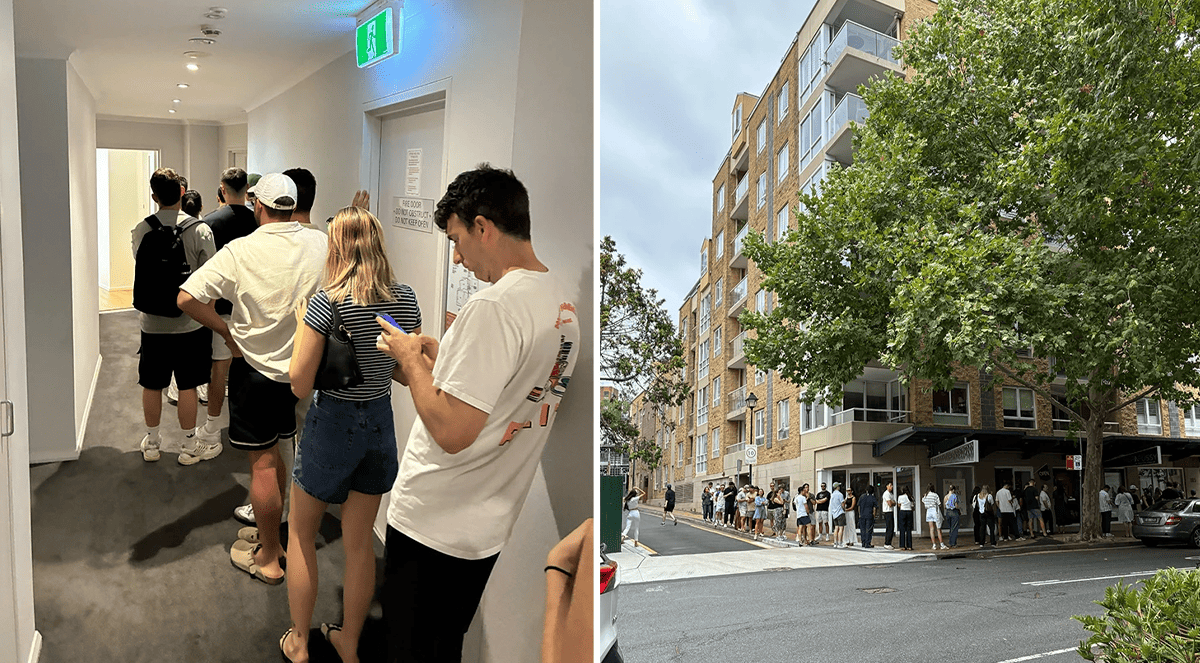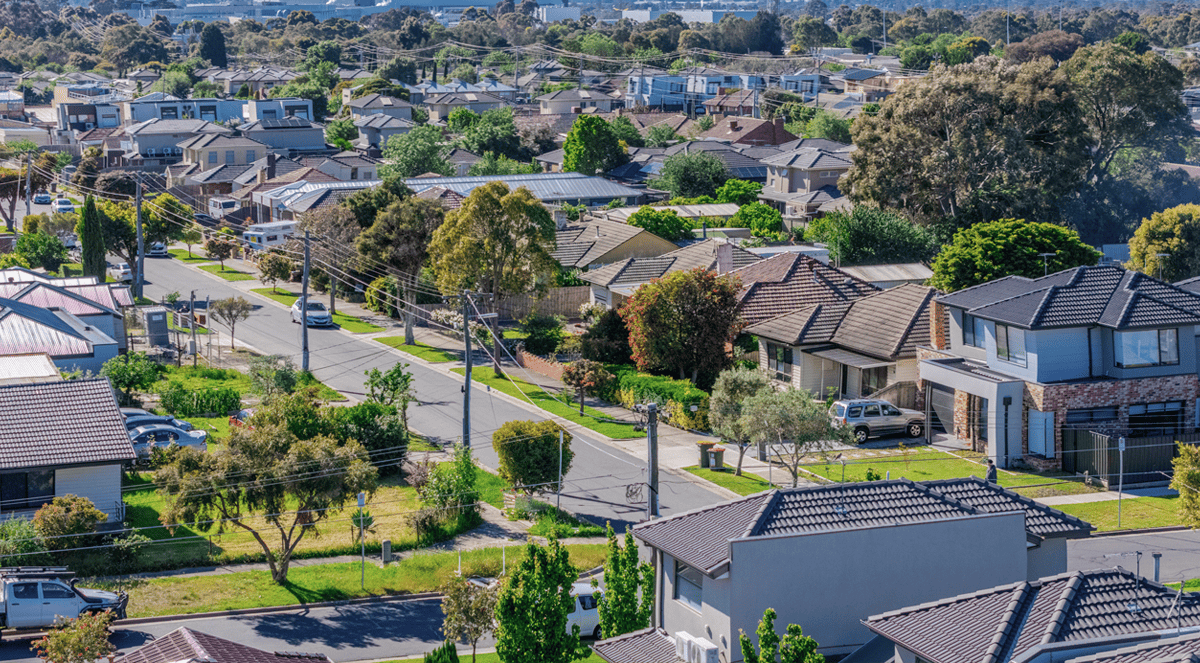Features > Property Education > Financial Advice
What to Expect Next: What does History tell us about Rises in the Cash Rate
.webp)
Media headlines have been dominated by interest rate rises over the past 14 months, with the RBA hiking the cash rate up to 4.1 percent, ending the emergency low cash rate implemented throughout the pandemic.
Household budgets have been stretched and mortgage holders have been under increased stress.
But that’s soon to come to an end.
The big four banks have forecasted that rates will begin falling next year, with NAB expecting the cash rate to drop to 3.1 percent by November 2024.
It will be a welcome reprieve to mortgage holders, but it begs the question – what comes next?
Historically, interest rates have experienced many rises and falls, but the significance of the recent increases have more to do with current levels of debt.
Australians are paying much more for housing than ever before, and are more sensitive to movements in the cash rate, as wages have failed to keep pace with rising house prices.
But the truth is, rising interest rates are not a new phenomenon.
Interest rates are actually still quite low, compared to historical averages.
And the good news is, past cycles of cash rate increases have always been followed by a sharp decline, as seen in the graph below.
The RBA hikes the cash rate, to reign in consumer spending and combat inflation, and then they lower it again, to avoid the economy restricting too much and tipping into recession.
After 12 rate rises and 14 months, we’re likely through the bulk of it now, with decreased interest rates lingering on the horizon.
So what does this mean for the property market? Well, as the cash rate declines, and money becomes cheaper to borrow, house prices usually increase, as seen recently, during the pandemic boom.
House prices generally tend to do the opposite of what interest rates do, rising as interest rates are falling, and falling as interest rates rise.
There are exceptions to this trend however, often triggered by large events, like the royal commission into banking in 2018 when banks were forced to crack down on lending criteria, making homeloans much harder to secure.
The most recent exception was just this year, when house prices took off again, gaining momentum despite interest rates still rising.
Historically, house prices have responded positively months after interest rates have finished rising. Not this time, though – short supply and high demand has turbocharged the market’s recovery.
So what can we expect when interest rates begin their decline in 12 months time?
As seen above, when the cash rate dropped in 2002, 2009, and 2011, house prices experienced a sharp increase.
And most recently, when the cash rate dropped to an emergency low in November 2020, house prices began their sharpest increase ever recorded, with national dwelling values rising 28.6 percent in less than 18 months.
When interest rates begin to drop next year, a few things will happen that will directly impact house prices.
The first is that borrowers will find that their borrowing capacity increases, with the banks willing to lend them more, as interest rates and subsequent serviceability requirements decrease.
Secondly, a renewed confidence will likely flow through to the market, with potential buyers who’ve been holding out due to higher interest rates re-entering the market, and new buyers enticed by cheaper loans, as seen in 2021.
According to the RBA’s Jonathon Kearns, head of domestic markets, an increase in interest rates by 400 basis points (which is how much the cash rate has risen since May 2022), is equivalent to a reduction in borrowing capacity of 40 percent.
So, as the cash rate falls, and interest rates follow, buyers will find that their borrowing capacity increases, and those who’ve been attempting to purchase a home could find it easier with increased buying power and reduced restrictions.
As a result, we could see increased numbers of buyers heading to market and vying for a property, against already heavy competition.
If supply levels don’t pick up, they’ll be competing for a diminished stock pool, and placing upwards pressure on property prices.
A perfect storm
Australia’s housing supply is already struggling to keep pace with demand, especially with record numbers of migrants moving to (mostly) capital cities.
When potential home buyers who are currently sidelined decide to reenter the market with improved buying power, we’ll see an entire new level of competition in our property market.
And as the most basic rule of economics tells us, high demand and low supply of any asset, product or service, equates to a higher price.
With an equilibrium in Australia’s housing supply still far out of reach, demand will continue to prevail, putting upwards pressure on the housing market, and driving values higher.
Stay Up to Date
with the Latest Australian Property News, Insights & Education.




.png?width=292&height=292&name=Copy%20Link%20(1).png)
 SIGN UP FOR FREE NEWSLETTER
SIGN UP FOR FREE NEWSLETTER


.png)





.jpg?width=1920&height=1080&name=Warning%2c%20You%20Might%20Be%20Facing%20Higher%20Taxes%20Soon%20(1).jpg)





.png?width=1920&height=1080&name=Rate%20Drops%20Signal%20BIGGEST%20Property%20Boom%20in%20DECADES%20(1).png)

.jpg?width=1920&height=1080&name=Labor%20vs%20Liberal%20These%20Housing%20Policies%20Could%20Change%20the%20Property%20Market%20Forever%20(1).jpg)
.jpg?width=1920&height=1080&name=QLD%20Slashes%20Stamp%20Duty%20Big%20News%20for%20Investors%20%26%20Home%20Buyers%20(1).jpg)
.jpg?width=1920&height=1080&name=Trump%20Just%20Slapped%20Tariffs%20%E2%80%93%20Here%E2%80%99s%20What%20It%20Means%20for%20Australia%20(1).jpg)
.jpg?width=1920&height=1080&name=Federal%20Budget%202025%20More%20Debt%2c%20No%20Housing%20%E2%80%93%20Here%E2%80%99s%20What%20You%20Need%20to%20Know%20(1).jpg)
.jpg?width=1920&height=1080&name=Australias%20Housing%20Crisis%20is%20about%20to%20get%20MUCH%20Worse%20(New%20Data%20Warns).jpg)
%20(1).jpg?width=1920&height=1080&name=Australias%20RENTAL%20CRISIS%20Hits%20ROCK%20BOTTOM!%20(2025%20Update)%20(1).jpg)
%20(1).png?width=1920&height=1080&name=Is%20Adelaide%20Still%20a%20Good%20Property%20Investment%20(2025%20UPDATE)%20(1).png)
.jpg?width=1920&height=1080&name=RBA%20Shocks%20with%20Rate%20Cuts!%20What%E2%80%99s%20Next%20for%20Property%20Investors%20(1).jpg)
%20(1).jpg?width=1920&height=1080&name=I%20Predict%20The%20Feb%20Rate%20Cut%20(My%20Price%20Growth%20Prediction)%20(1).jpg)
.png?width=1920&height=1080&name=Why%20Property%20Prices%20Will%20Rise%20in%202025%20Market%20Predictions%20(1).png)
.jpg?width=1920&height=1080&name=Why%20Investors%20Are%20Choosing%20Apartments%20Over%20Houses%202%20(1).jpg)
.jpg?width=1920&height=1080&name=Why%20Rate%20Cuts%20Will%20Trigger%20A%20Property%20Boom%20(1).jpg)
.jpg?width=1920&height=1080&name=Retire%20On%202Million%20With%20One%20Property%20(Using%20SMSF).jpg)
.jpg?width=1920&height=1080&name=4%20Reasons%20Why%20You%20Should%20Invest%20in%20Melbourne%20Now%20(1).jpg)
%20(1).jpg?width=1920&height=1080&name=Old%20Property%20vs%20New%20Property%20(Facts%20and%20Figures%20Revealed)%20(1).jpg)
%20(1).jpg?width=1920&height=1080&name=Will%20The%20New%20QLD%20Govt%20Create%20a%20Property%20Boom%20or%20Bust%20(My%20Prediction)%20(1).jpg)
%20Scott%20Kuru%20(1).jpg?width=1920&height=1080&name=Inflation%20Hits%20Three-Year%20Low%20(Will%20RBA%20Cut%20Rates%20Soon)%20Scott%20Kuru%20(1).jpg)
.jpg?width=1920&height=1080&name=How%20to%20Buy%20Investment%20Property%20Through%20SMSF_%20The%20Ultimate%20Guide%20(1).jpg)
.jpg?width=1920&height=1080&name=Victoria%20Slashes%20Stamp%20Duty%20Melbourne%20Set%20to%20Boom%20Scott%20Kuru%20(1).jpg)
.png?width=1571&height=861&name=Are%20Foreign%20Buyers%20Really%20Driving%20Up%20Australian%20Property%20Prices%20(1).png)
.jpg?width=1920&height=1080&name=The%20Single%20Factor%20That%20Predicts%20Property%20Growth%20Regions%20(1).jpg)
%20Scott%20Kuru%20(1).jpg?width=1920&height=1080&name=My%20Prediction%20On%20Rates%20%26%20Negative%20Gearing%20(Market%20Crash)%20Scott%20Kuru%20(1).jpg)

-1.png?width=1920&height=1080&name=Major%20Banks%20Cut%20Rates%20Will%20RBA%20Follow%20Suit%20(Sept%20Rate%20Update)-1.png)
%20Scott%20Kuru-1.png?width=1920&height=1080&name=Rate%20Cut%20Coming%20What%20New%20Zealands%20Move%20Means%20for%20Australia%20(Sept%20Prediction)%20Scott%20Kuru-1.png)
%20(1).jpg?width=1920&height=1080&name=Buy%20when%20the%20interest%20rates%20are%20high!%20(Why%20you%20must%20buy%20now!)%20(1).jpg)
.jpg?width=1920&height=1080&name=Carms_Revised%20Taxes%20Due%20Aug%209%20YT%20Thumbnail02%20(1).jpg)
.jpg?width=1920&height=1080&name=Carms_Too%20Little%20Too%20Late%20Aug%207%20YT%20Thumbnail01%20(1).jpg)









.jpg?width=1920&height=1080&name=Carms_Rate%20Drop%20In%20July%20Jun%2010%20YT%20Thumbnail02%20(1).jpg)
.jpg?width=1920&height=1080&name=Carms_Own%20a%20Property%20V6%20Jun%205_YT%20Thumbnail%20(1).jpg)









.png?width=1920&height=1080&name=Artboard%201%20(3).png)






.jpg?width=1920&height=1080&name=YT%20thumbnail%20%20(1).jpg)

